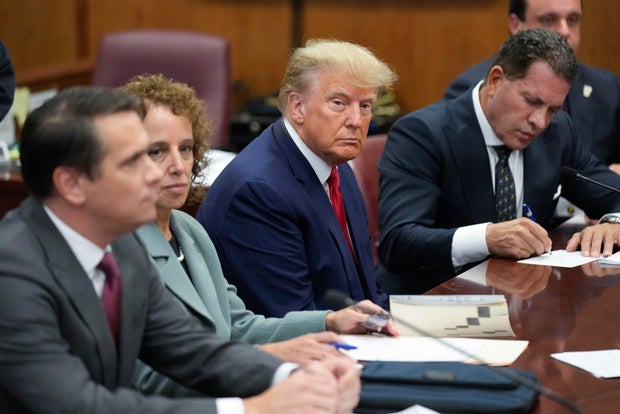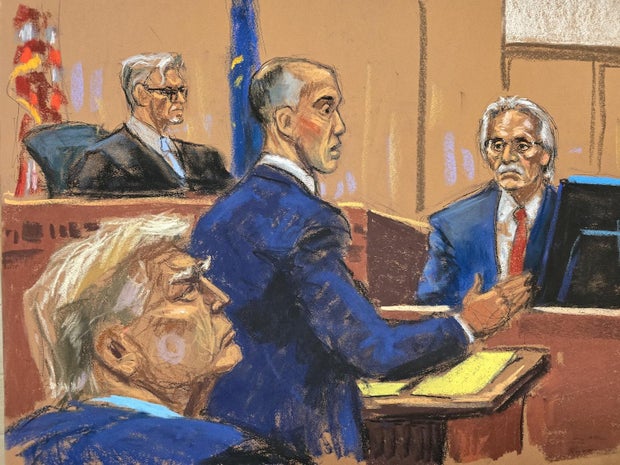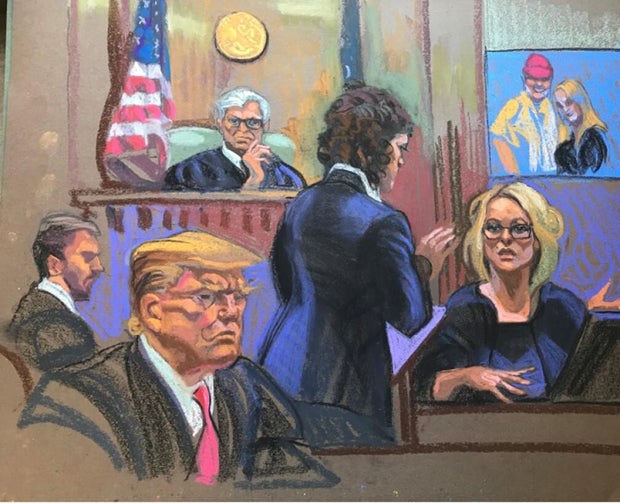CBS News
Trump was found guilty in his “hush money” trial. Here’s what to know about the verdict and the case.

Former President Donald Trump was found guilty of 34 felony counts of falsifying business records by a jury in New York on Thursday, marking the end of a historic trial stemming from a “hush money” payment made to an adult film star before the 2016 election.
The trial lasted roughly six weeks, and the jury spent two days deliberating before returning a verdict. Trump denounced the decision as “rigged” and vowed to fight the conviction. His sentencing is scheduled for July 11.
Here are the basics of the charges, what happened during the trial and what comes next:
What were the charges?
Seth Wenig / Getty Images
Trump was indicted on March 30, 2023, and charged with 34 state counts of falsifying business records in the first degree, a felony in New York.
What was the verdict?
Trump was found guilty on all charges on May 30, 2024. The jury returned a unanimous verdict in the Manhattan courtroom where the trial unfolded for six weeks.
What was needed for the jury to convict?
Justice Juan Merchan instructed jurors before they began deliberations that in order to find Trump guilty of falsifying business records in the first degree, they needed to unanimously conclude not only that he caused records to be falsified, but that he “conspired to promote or prevent the election of any person to a public office by unlawful means.”
There were a few types of “unlawful means” that the jury heard evidence about, including: falsification of other business records, violations of campaign finance laws and violations of tax tax laws.
What exactly did prosecutors say Trump did?
Prosecutors from Manhattan District Attorney Alvin Bragg’s office said Trump met with former National Enquirer publisher David Pecker and ex-fixer Michael Cohen in his Trump Tower in August 2015, and that the trio hatched a conspiracy to identify, purchase and squash stories that might harm Trump’s reputation and presidential campaign.
Just days before the 2016 election, Cohen paid $130,000 to adult film star Stormy Daniels, who claimed she had sex with Trump in 2006. She agreed to keep her story under wraps in exchange for the money.
After Trump became president, Cohen was paid $35,000 a month for a year in a series of checks, most of which were signed by Trump. Prosecutors said the checks and associated business records were illegally portrayed as payments to Cohen for his legal work, when in fact they were intended to reimburse him for the Daniels deal, among other things.
What did Trump’s lawyers say?
Jane Rosenberg
Trump’s lawyers said the arrangement with Pecker and the National Enquirer was not atypical for political campaigns, which often try to influence media narratives about candidates. They said non-disclosure agreements like the one Cohen struck with Daniels are common, too.
As for the checks to Cohen, Trump’s lawyers noted that Cohen’s title at the time was “personal attorney to the president,” and he actually was being paid for ongoing legal work. They said Cohen and Trump had a verbal retainer agreement, but not a signed one.
How about Trump himself?
Trump pleaded not guilty to the charges and denied all wrongdoing. He accused Bragg, a Democrat, of pursuing the case for political gain. Trump has called the case a “con job” and said the charges were “rigged” after the verdict came down.
Who were the key players?
Trump, Cohen and Pecker got top billing during the trial. Pecker was called to the stand by prosecutors first, and described the August 2015 Trump Tower meeting, as well as years of communications with Cohen and Trump about the scheme.
His testimony corroborated key moments relayed by Cohen, whose credibility the defense repeatedly sought throughout to undermine. Pecker’s time on the stand was the lead-in to weeks worth of testimony from 18 others before Cohen, their final witness. Prosecutors sought to use those weeks to back up Cohen’s story with corroborating evidence.
During the first day of their deliberations, the jury asked to hear portions of Pecker and Cohen’s testimony related to the Trump Tower meeting.
What did Cohen say?
Cohen said Trump received regular updates on efforts to cover up salacious stories about him when he ran for president in 2016, and personally signed off on the scheme to falsify records related to them.
Cohen recounted three instances when he, Pecker and the editor of the National Enquirer worked to secure the rights to stories with salacious claims about Trump.
The jury heard a secret recording Cohen made of a conversation with Trump, in which Trump appeared comfortable with the purchase of a story told by another woman, named Karen McDougal.
“So, what do we got to pay for this? 150?” Trump can be heard saying on the tape.
Not long after the Enquirer paid for McDougal’s story, Daniels’ story hit the market. Her attorney approached the Enquirer about selling the rights one day after the release of the “Access Hollywood” tape in October 2016. On the recording, Trump was heard saying he could “grab [women] by the p****” and “make them do anything.” The tape posed a major threat to his electoral prospects.
Cohen recounted intense negotiations in which everyone involved — Trump, Cohen, Daniels, her attorney and the Enquirer editor — were aware that Daniels’ claim of a sexual encounter with Trump might have dire consequences for his campaign.
Cohen wired Daniels’ attorney $130,000 of his own money on Oct. 28, 2016.
During his testimony, Cohen described how working for Trump for a decade was an “amazing” experience that turned sour after the “hush money” payment to Daniels became public in 2018.
He testified that he believed he was subject to a “pressure campaign” by Trump and his allies after the FBI raided his home and office that year, leading to a pair of guilty pleas to federal charges.
Under scathing cross-examination from defense attorney Todd Blanche, Cohen acknowledged that he’s since made a living by loudly criticizing Trump.
He admitted wanting to see Trump imprisoned, and saying as much on his podcast.
Cohen also acknowledged lying under oath on multiple occasions, and, in a shocking moment, admitted for the first time to having stolen tens of thousands of dollars from the Trump Organization.
What did Daniels say on the stand?
Christine Cornell
Daniels wasn’t part of the scheme to influence the election. She never worked for Trump and had no involvement in any of the crimes alleged in the case.
Still, her story of sex with Trump in 2006 was the catalyst that sparked a series of events leading to this unprecedented criminal trial. Prosecutors said she was called to the stand because Blanche denied they ever had sex in his opening statement, an assertion they believed they had to rebut.
Daniels said she met Trump at a celebrity golf tournament in Nevada, and later was invited by Trump’s bodyguard to a dinner with the famed businessman. She said they met up at a hotel suite she described in elaborate detail, right down to the tiles, and she was expecting to go to dinner when instead they began talking about business.
Daniels said Trump showed a keen interest in her industry, and seemed to value her insights. After some two hours of talking, with no dinner in sight, she excused herself to go to the bathroom. She recalled being surprised when she emerged to see that Trump had undressed down to a T-shirt and boxers. She described the sex that followed as, on her part, reluctant.
This part of her testimony caused the defense to demand a mistrial, a motion that was denied.
Daniels then described interacting with Trump frequently over the next year or so — including briefly meeting with him at Trump Tower — because he promised to advocate for her to get a spot on his reality television competition. When he told her it wouldn’t happen, they stopped communicating.
Later, through a representative, she began shopping her story, seeking to sell the rights to it. When Trump’s presidential candidacy gained steam in 2016, those efforts also became heated. They reached a fever in October of that year, when the “Access Hollywood” outtake surfaced.
Daniels said she realized her story was potentially more valuable, because it could be bad for his campaign. Cohen testified to frantic efforts to purchase it.
What comes next?
Trump’s conviction kickstarts the sentencing portion of the case. Merchan, the judge, set a date of July 11 for Trump’s sentencing hearing. He asked the defense to submit any motions they plan to request no later than June 13, and said prosecutors must respond by June 27.
Falsification of business records carries a maximum sentence of four years in prison and a $5,000 fine for each charge, but Merchan has broad leeway when determining the punishment. Some experts expect Merchan to use other options, like fines, probation or home confinement. But others say he could order Trump to serve some time behind bars.
CBS News
Former New York Gov. David Paterson, stepson attacked while walking in New York City

NEW YORK — Former New York Gov. David Paterson and his stepson were attacked in New York City on Friday night, authorities said.
The incident occurred just before 9 p.m. on Second Avenue near East 96th Street on the Upper East Side, according to the New York City Police Department.
Police said officers were sent to the scene after an assault was reported. When officers arrived, police say they found a 20-year-old man suffering from facial injuries and a 70-year-old man who had head pain. Both victims were taken to a local hospital in stable condition.
In a statement, a spokesperson for the former governor said the two were attacked while “taking a walk around the block near their home by some individuals that had a previous interaction with his stepson.”
The spokesperson said that they were injured “but were able to fight off their attackers.”
Both were taken to Cornell Hospital “as a precaution,” he added.
Police said no arrests have been made and the investigation is ongoing.
The 70-year-old Paterson, a Democrat, served as governor from 2008 to 2010, stepping into the post after the resignation of Eliot Spitzer following his prostitution scandal. He made history at the time as the state’s first-ever Black and legally blind governor.
CBS News
10/4: CBS Evening News – CBS News
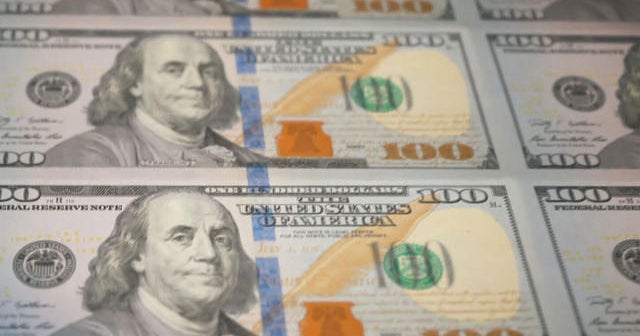
Watch CBS News
Be the first to know
Get browser notifications for breaking news, live events, and exclusive reporting.
CBS News
Teen critically wounded in shooting on Philadelphia bus; one person in custody
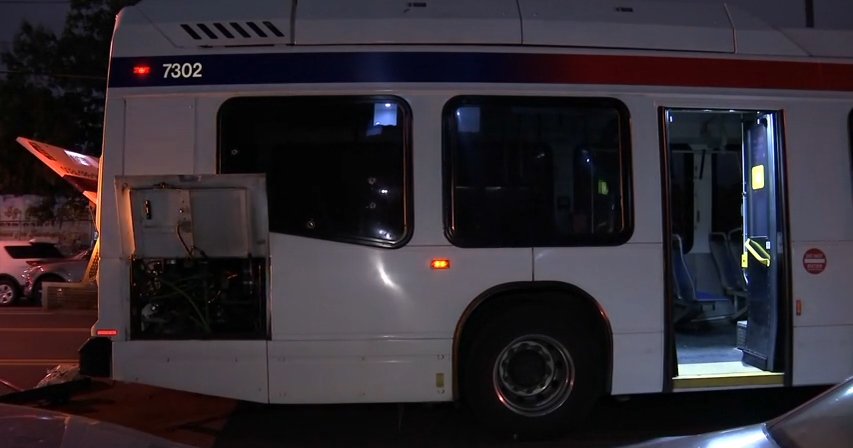
A 17-year-old boy was critically injured and a person is in custody after a gunman opened fire on a SEPTA bus in North Philadelphia Friday evening, police said.
At around 6:15 p.m., Philadelphia police were notified about a shooting on a SEPTA bus traveling on Allegheny Avenue near 3rd and 4th streets in North Philadelphia, Inspector D F Pace told CBS News Philadelphia.
There were an estimated 30 people on the bus at the time of the shooting, Pace said, but only the 17-year-old boy was believed to have been shot. Investigators said they believe it was a targeted attack on the teenager and that he was shot in the back of the bus at close range.
According to Pace, the SEPTA bus driver alerted a control center about the shooting, which then relayed the message to Philadelphia police, who responded to the scene shortly.
Officers arrived at the scene and found at least one spent shell casing and blood on the bus, but no shooting victim, Pace said. Investigators later discovered the 17-year-old had been taken to Temple University Hospital where he is said to be in critical condition, according to police.
CBS Philadelphia
Through their preliminary investigation, police learned those involved in the SEPTA shooting may have fled in a silver-colored Kia.
Authorities then found a car matching the description of the Kia speeding in the area and a pursuit began, Pace said. Police got help from a PPD helicopter as they followed the Kia, which ended up crashing at 5th and Greenwood streets in East Mount Airy. Pace said the Kia crashed into a parked car.
The driver of the crashed car ran away but police were still able to take them into custody, Pace said.
Investigators believe there was a second person involved in the shooting who ran from the car before it crashed. Police said they believe this person escaped near Allegheny Avenue and 4th Street, leaving a coat behind.
According to Pace, police also found a gun and a group of spent shell casings believed to be involved in the shooting in the same area.
“It’s very possible that there may have been a shooting inside the bus and also shots fired from outside of the bus toward the bus,” Pace said, “We’re still trying to piece all that together at this time.”
This is an active investigation and police are reviewing surveillance footage from the SEPTA bus.


